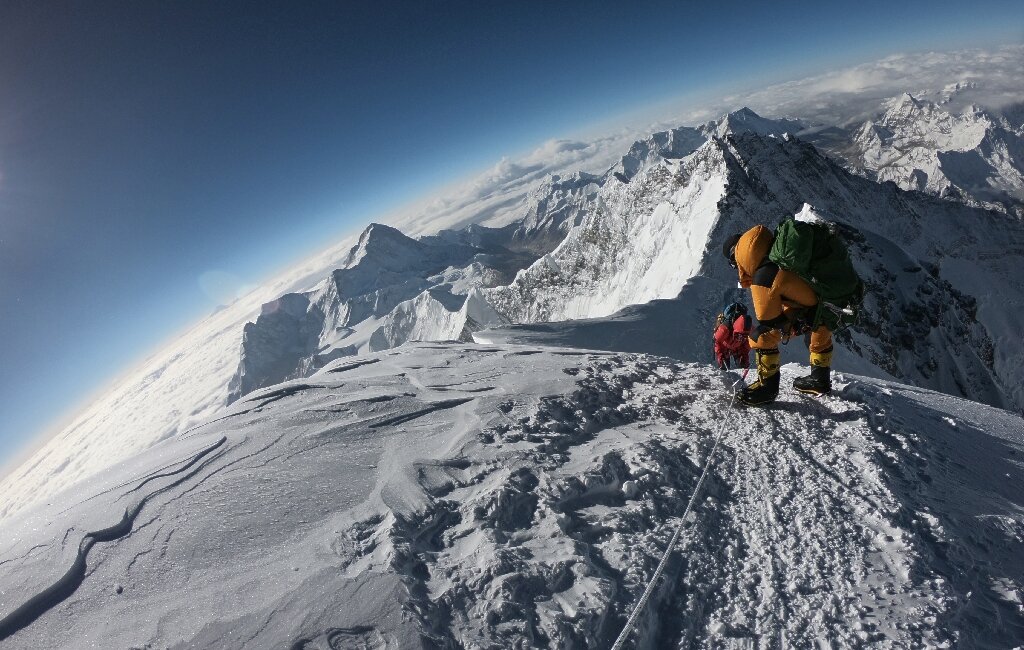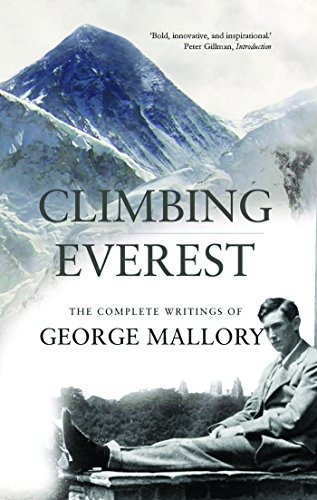
People ask me, ‘What is the use of climbing Mount Everest?’ and my answer must at once be, ‘It is of no use.’ There is not the slightest prospect of any gain whatsoever. Oh, we may learn a little about the behaviour of the human body at high altitudes, and possibly medical men may turn our observation to some account for the purposes of aviation. But otherwise nothing will come of it. We shall not bring back a single bit of gold or silver, not a gem, nor any coal or iron…
If you cannot understand that there is something in man which responds to the challenge of this mountain and goes out to meet it, that the struggle is the struggle of life itself upward and forever upward, then you won’t see why we go. What we get from this adventure is just sheer joy. And joy is, after all, the end of life.
George Mallory
Climbing Everest
I once met Sir Edmund Hillary, the first man—along with sherpa Tenzing Norgay—atop Everest. He certainly made an impression with his towering height, sparkle in his eye and readiness for a night on the town with the boys. The work he was funding and performing to build hospitals and schools in the Himalayas also formed a lifelong role-model impression.
That was some evening.
The Greatest
Another evening for the ages was hanging out with all-universe legend Russian climber Anatoli Boukreev, who ascended ten of the 14 peaks higher than eight thousand meters without supplemental oxygen. He summited K2, the north face of Everest, and set all sorts of incomprehensible speed records for his solo climbs. The greatest climber of all time and a most uncommonly rare, Promethean titan for pushing the utmost edges of man’s capability and endurance.
That night he told me of saving lives on Everest in 1996, the infamous year so many died, immortalized in book and film in “Into Thin Air,” but he was haunted by what had happened, including the misrepresentations and unfair judgments in the book. He’d risked everything in the most God-awful of earthly conditions to save strangers and was forced to write his narrative in The Climb: Tragic Ambitions On Everest, which very wrongly achieved nowhere near the popular culture of “Into Thin Air.”
When I met him he had just won The David A Sowles Memorial Award, a highest award for courage, for his efforts in bringing Sandy Hill Pittman, Charlotte Fox and Tim Madsen back from a stormy South Col to Camp IV alive. He had also just completed solo ascents of Broad Peak and Gasherbrum II, both over 26,247 feet. He had actually made two other eight-thousanders solo for a total of four all within eighty days.
Anatoli had a look in his eyes that I’ve never seen in any other human being.
Sadly, although he seemed perhaps to know it was coming, a couple months later on Christmas he died in an avalanche while making a virtually unheard of winter ascent up a new route of Annapurna in Nepal.
At The Top
I collect Zen koans inside my mind. One of the very most chief among them is “When you get to the top of the mountain, keep climbing.”
To pioneers George Mallory and Andrew Irvine who began it all, to Sir Edmund Hillary who broke through the impossible, and to Anatoli Boukreev, the most courageous and accomplished adventurer of modern times: do keep climbing my brothers of glory.
For us all, a koan to keep in mind now, in the historic weeks and months to come, and evermore as we ascend for joy, adventure, and man’s rightfully undaunted place on what must be kept a most healthy and teeming earth.
We orbit a 27 million degree ball of fire in a -455 degree vacuum, and we only ever have this one safe blue and green home. Please take utmost care and respect all day every day.


❏
